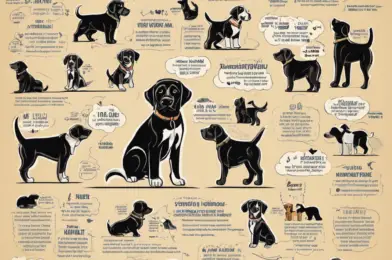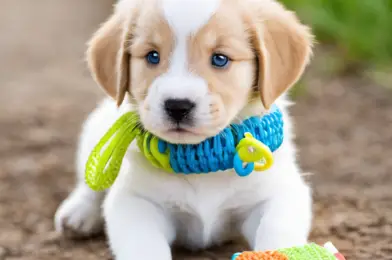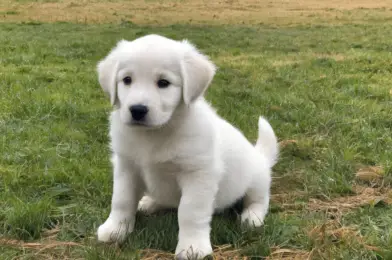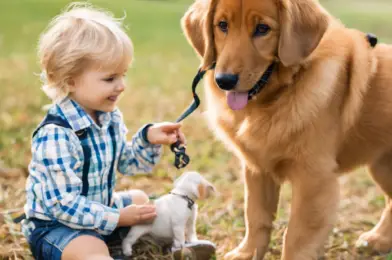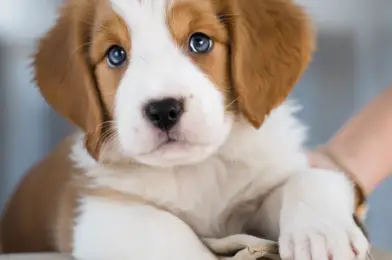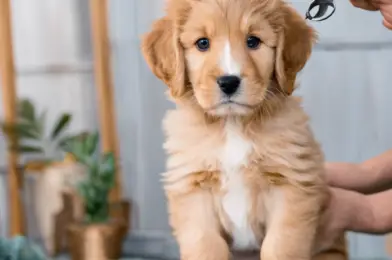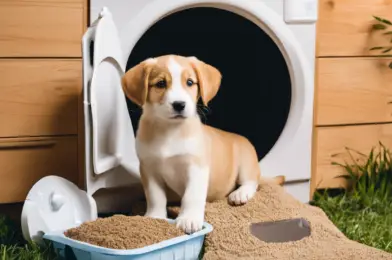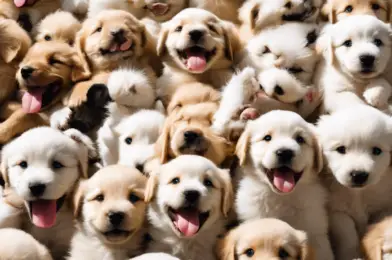# Understanding Your Puppy’s Body Language: A Guide to Their Non-Verbal Communication
As a new puppy parent, you might be eager to understand what your furry friend is trying to tell you. Puppies, like all dogs, have their own unique language—a rich vocabulary of body movements and expressions that convey their emotions, intentions, and desires. Decoding this language is an essential part of building a strong bond and ensuring your puppy’s overall well-being. Here’s a comprehensive guide to help you navigate the fascinating world of puppy body language.
**The Power of Body Language**
Puppies communicate primarily through body language, and their postures, movements, and facial expressions can reveal a wealth of information. From the moment they open their eyes, puppies start expressing themselves, whether it’s asking for food, showing submission, or declaring their playful mood. Understanding these signals is crucial for effective communication and can help prevent misunderstandings that might lead to behavioral issues later on. For instance, recognizing signs of fear or anxiety can allow you to create a calmer environment, while identifying playfulness can encourage healthy interaction and bonding.
**The Language of the Tail**
One of the most expressive parts of a puppy’s body is its tail. The tail acts as a barometer of your puppy’s mood. A happy, relaxed puppy will usually have a tail that hangs down naturally or wags in a gentle, fluid motion. When your puppy is excited, the tail wags more vigorously and might even move in a circular motion, resembling a helicopter’s blades. This is a clear sign of joy and enthusiasm. However, if the tail is tucked between the legs, it often indicates fear or submission. A stiff, raised tail could be a sign of alertness or potential aggression, especially if the fur along the spine is standing up, creating what’s known as a ‘hackles-up’ appearance.
**Ears and Their Expressions**
Puppies’ ears are another window into their emotional state. When your puppy is relaxed, its ears will typically be in a neutral position. As they become more alert or curious, the ears tend to lift or point forward. If you notice your puppy’s ears pulled back, it might be a sign of submission or fear. When the ears are laid back flat against the head, it could indicate aggression, especially if accompanied by a tense body posture.
**Eye Contact and Gaze**
A puppy’s gaze can also provide important clues. A soft, relaxed gaze with half-closed eyes often indicates contentment or submission. You might see this when your puppy is in a calm state or during play when they want to signal that it’s all in good fun. Direct, intense eye contact, however, can be a sign of challenge or even aggression, especially if the body is stiff. Some puppies might also use this stare when they are asking for something, like a treat or attention. It’s essential to teach puppies that this behavior isn’t a desirable form of communication with humans.
**Body Posture and Movement**
The overall posture and movements of your puppy can convey a lot about their intentions. A puppy that’s crouching with its front legs and head lowered is often inviting play or showing submission. Rolling onto their back, exposing their belly, is another classic play invitation or sign of submission. If your puppy is standing tall, with its body stiff and head held high, they might be on alert or challenging another dog or even asserting dominance. A relaxed puppy will have a loose, fluid body posture, while a fearful or anxious one will be more tense and rigid.
**Vocalizations**
Puppies also use vocalizations to communicate, from soft whines and whimpers to express need or discomfort, to excited yips during play. As they mature, their barks will convey more specific messages, from alerting you to a stranger’s presence to expressing their desire for attention. Understanding the context of these sounds is critical to responding appropriately.
**The Importance of Context**
Just like with human communication, context plays a significant role in interpreting puppy body language. For instance, a wagging tail can mean different things depending on the situation. A puppy might wag its tail out of excitement upon seeing their favorite toy, but that wag could also indicate a nervous excitement when meeting a new dog. Always consider the environment and other body language cues to get the full picture of what your puppy is trying to say.
**Learning to Listen**
Understanding puppy body language is a skill that develops with time and observation. Spend time watching your puppy interact with its environment and other animals. Pay attention to the subtle cues they give during play, mealtime, and when meeting new people or animals. The more you observe, the better you’ll become at understanding their unique language.
**Training and Positive Reinforcement**
As you learn your puppy’s language, you can also teach them to understand yours. Positive reinforcement is an excellent way to encourage desired behaviors and communication. Reward your puppy for clear, confident body language and discourage behaviors that might indicate fear or aggression. This training helps build a strong, respectful relationship and ensures your puppy feels safe and understood.
In conclusion, puppy body language is a fascinating and essential aspect of their development and your relationship. By learning to read their signals, you can better meet their needs, address concerns, and build a strong, loving bond. It’s a language of love and care that, once mastered, will enrich your life together. So, keep an eye on that wagging tail, those playful pounces, and all the adorable expressions, and you’ll soon become fluent in puppy talk!

